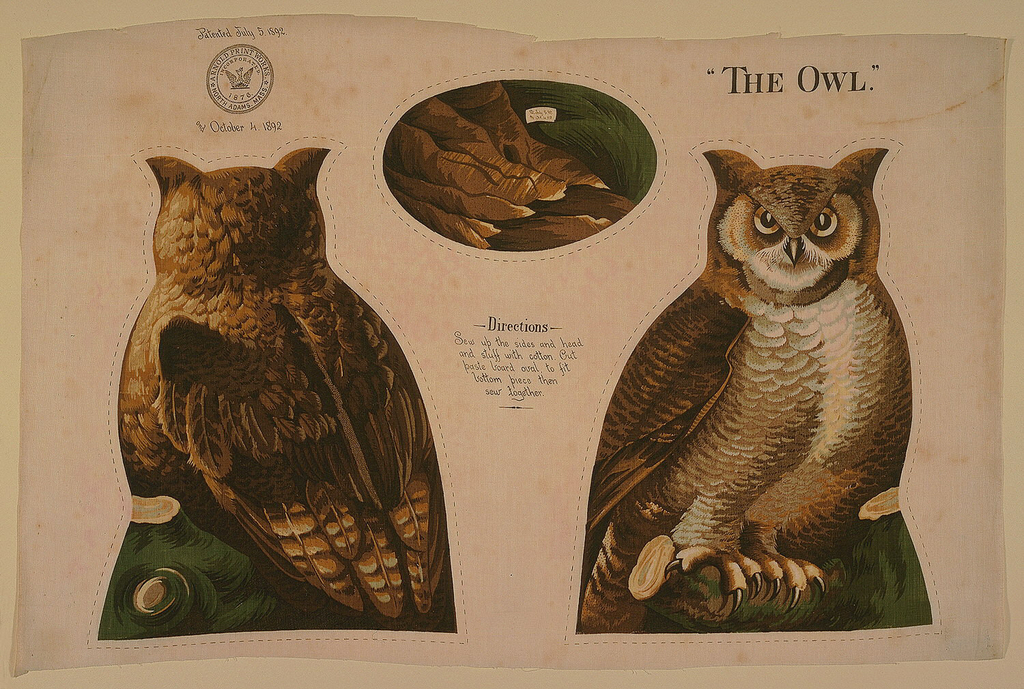Owls are nocturnal birds that are characterized in most people’s memories as wise creatures, perched up on their branch overlooking the world’s activities; always awake, eyes never closed. In my memory, owls are the talisman of a childhood favorite lollipop, the tootsie roll pop. The mind burning question of: “How Many Licks Does It Take To Get To The Center Of A Tootsie Pop?” The answer of course being, “The world may never know.”
The Owl textile is printed on cotton and was exhibited at the Cooper-Hewitt, National Design Museum in 1978 in an exhibition titled “Look Again,” March 20-June 4, 1978. This exhibition featured 500 works from the permanent collection of all media, and was supposed to portray the Hewitt sister’s mission of inspiring the public with design and education. The owl’s body is printed from the back and bottom views in yellow ochre, sienna and olive green. It is a template, meant to be cut and sewn into a stuffed toy. Sewing instructions are printed in the center. "Arnold Print Works, North Adams, MA" is printed on the upper left corner. Although sewing indicated a feminine trade, sewing an object into a toy can be transformed into a unisex product. It also isn’t a craft only demonstrated in the 1800’s. In 1999, in my seventh grade home economics class, we also received a fabric template to cut out and make a stuffed animal from. The activity illustrated to most of us that three dimensional items proved to be difficult to sew, especially while keeping the stuffing contained. The process resulted in lopsided toys and our fingers wrapped in bandages. The sewing manual that each animal came with was pages long, with instructional photos and was in two different languages, much more complicated than the directions rendered in The Owl textile: “cut paste board oval to fit bottom piece, then sew together.”
Although this textile was printed in the 1892, owls and birds in general have a specific fashion that has been restored in the 21st century. Even when searching in Cooper-Hewitt’s collection, 38 objects appear with associations tied to the owl. The owl is portrayed on our match safes, prints, furniture cabinets, and even magazine ads.
